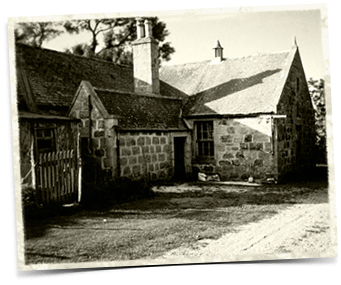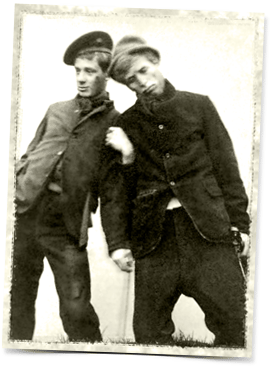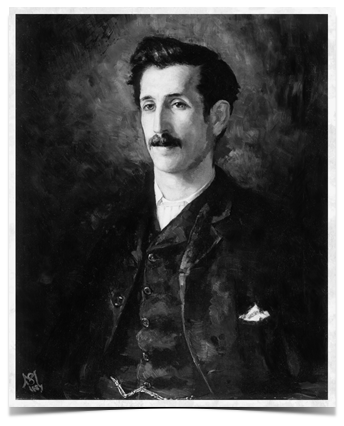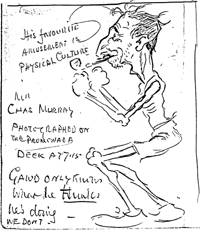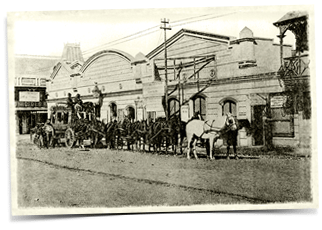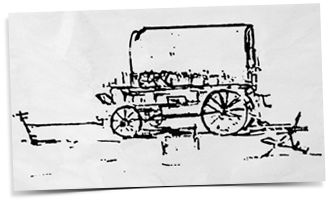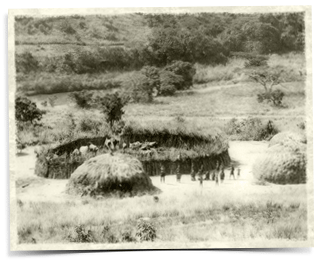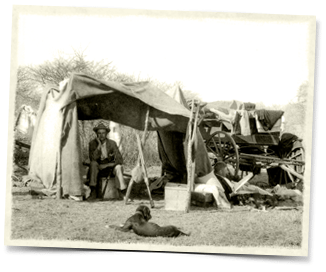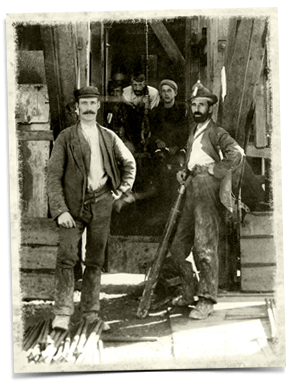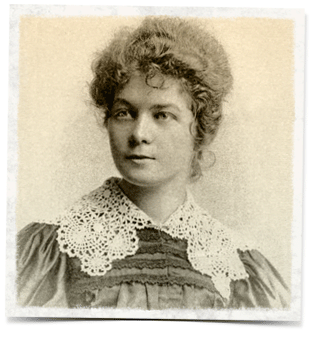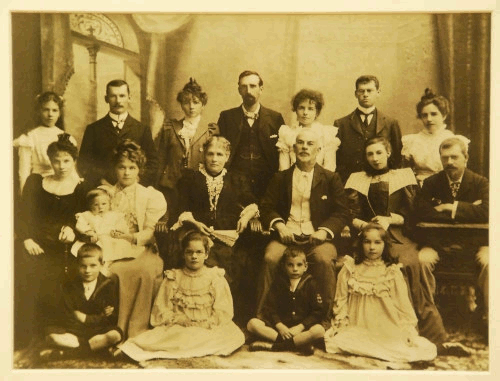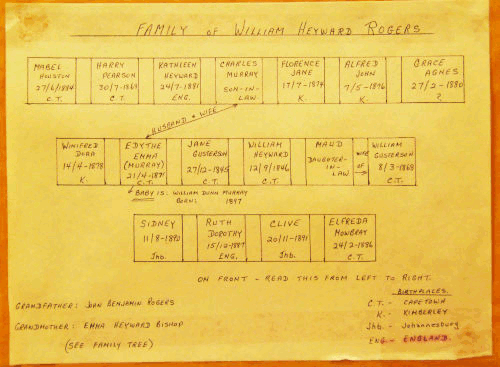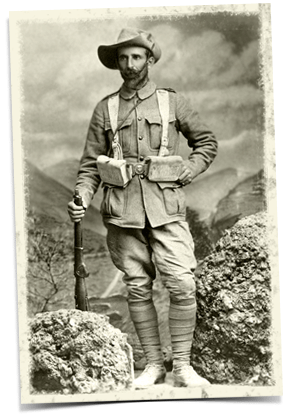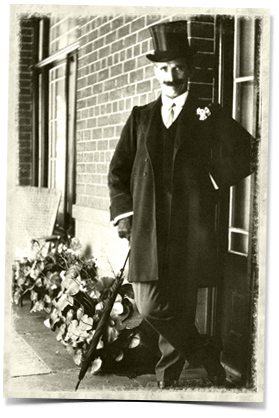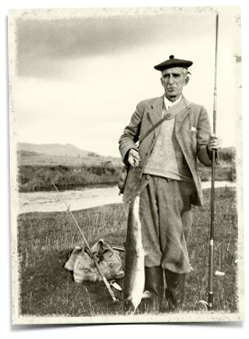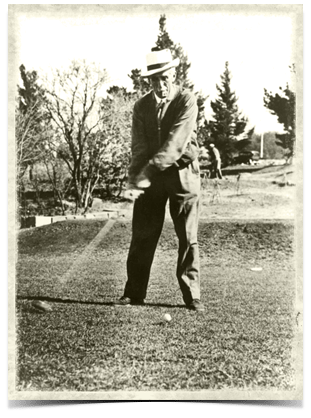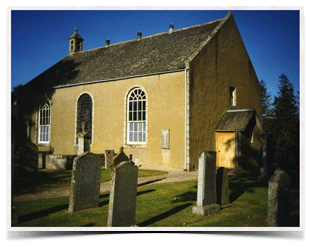Biography
Charles Murray was born on the 28th of September 1864, near Alford, 25 miles west of Aberdeen. The second child and only son of Peter Murray, a country carpenter turned land-steward. His mother Margaret died when he was three, and he was brought up by his aunt, Mary Robbie.
After attending the local school at Gallowhill he began, in 1881, a five-year apprenticeship at Walker and Beattie, land surveyors in Aberdeen.
He recalled later that 'I came to Aberdeen, a country lad of sixteen with a "cockit" bonnet and, because it was winter, a big "gravit."' His only worry in the big city 'was when the chief's bell rang and I had to go to him and try to say a few sentences in what I thought to be English... The difficulty of translating my thoughts... was a real trouble.'
The difficulty was only temporary. Murray quickly settled to learning the elements of his chosen profession and despite his modest origins, became an immediate social success.
One friend recalled that 'he became in less than no time the most popular member of a most exclusive club of West End young men' because as well as a compelling personal magnetism 'he had all sorts of gifts' -
'He was... a good shot, a keen angler, played several games well, could take his part in amateur theatricals, even took prizes at athletic sports such as throwing the hammer, played the fiddle, did pen and ink caricatures, was a good hand at bridge.'
After three years of local practice, he set out for South Africa, where he was to work for the next 35 years.
The first part of the voyage, to London, as chronicled by Murray himself, was enlivened by the eccentricities of some of his fellow-passengers including
'two soldiers throwing Shakespearian quotations at each other from opposite ends of the cabin; a cockney sailor... struggling into a clean shirt... quite a rare occurrence with him... Next to him lay an emigrant on his way to Dunedin. His most striking peculiarity was the vigorous way in which he slept.'
He disembarked at Cape Town in January 1889, then after a brief stay, set out by train for the 650 mile journey for Kimberley, 'diamond town', where he visited the great De Beers mine.
His ultimate goal, Johannesburg was 300 miles further, and rather than wait a fortnight for an inside seat on the mail-coach, he opted to travel outside on a journey in which the coach jolted over deeply rutted roads, pausing only to change drivers and horses.
An early attempt to set up in business with two fellow Scots in 1889 was a casualty of a general business decline and in 1891, knowing nothing of oxen or wagons, Murray volunteered to drive a team bound for Mashonaland - today's Zimbabwe.
At the first outspan, the oxen went missing and took hours to retrieve.
Misfortunes multiplied: porters deserting; animals falling sick; provisions toppling into flood-water; wagon-wheels shattering; attempts at gold-prospecting futile. Murray and his companions finally arrived back in Johannesburg with three shillings between the four of them. For the next five grueling years he worked as a surveyor in the Rand gold mines.
In 1895 he married Edith Rogers, grand-daughter of John Rogers, a Devonshire man who had settled in Cape Colony in the mid-century.
Edith Rogers' father and uncle were prosperous businessmen in Kimberley; she was the eldest of eight daughters - in a family of thirteen!
with Charles Murray, (son-in-law) centre back row.
Thanks to Stuart Rogers (great-nephew of Charles Murray) for the photo and legend.
In 1899, when the 2nd Boer War broke out, Murray, with his wife and two-year old son were in Alford visiting Murray's family. He returned immediately to South Africa to enlist.
However the government of the Transvaal thought his skills could be better employed and Lieutenant Murray resigned his commission to accept the post of Deputy Inspector of Mines. He had set his foot upon the Public Service ladder and within ten years was Secretary for Public Works for the Union of South Africa.
In 1920 the University of Aberdeen acknowledged his significant contribution to Scottish poetry by awarding him an LLD.
His South African service was recognised by the award in the New Year's Honours List 1922 of a CMG - Companion of the Order of St Michael and St George.
His 17 years of retirement were spent traveling widely, enjoying the society of friends - and fishing and playing golf in conditions which the speaker of his early poem 'The Exile' had longed for
The Exile
In Afric's fabled fountains I have panned the golden sand -
Caught crocodile with baviaan for bait -
I've fished, with blasting gelatine for hook an' gaff an' wand,
An' lured the bearded barbel to his fate:
But take your Southern rivers that meander to the sea,
And set me where the Leochel joins the Don,
With eighteen feet of greenheart an' the tackle running free -
I want to have a clean fish on.
In hot December weather when the grass is caddie high
I've driven clean an' lost the ball an' game,
When winter veld is burned an' bare I've cursed the cuppie lie -
The language is the one thing still the same;
For dongas, rocks, an' scuffled greens give me the links up North,
The whins, the broom, the thunder of the surf,
The three old fellows waiting where I used to make a fourth -
I want to play a round on turf.
Charles Murray died on 12 April 1941; appropriately for a man who was often called simply 'Hamewith', his ashes were laid in Alford West kirkyard in his native village.


